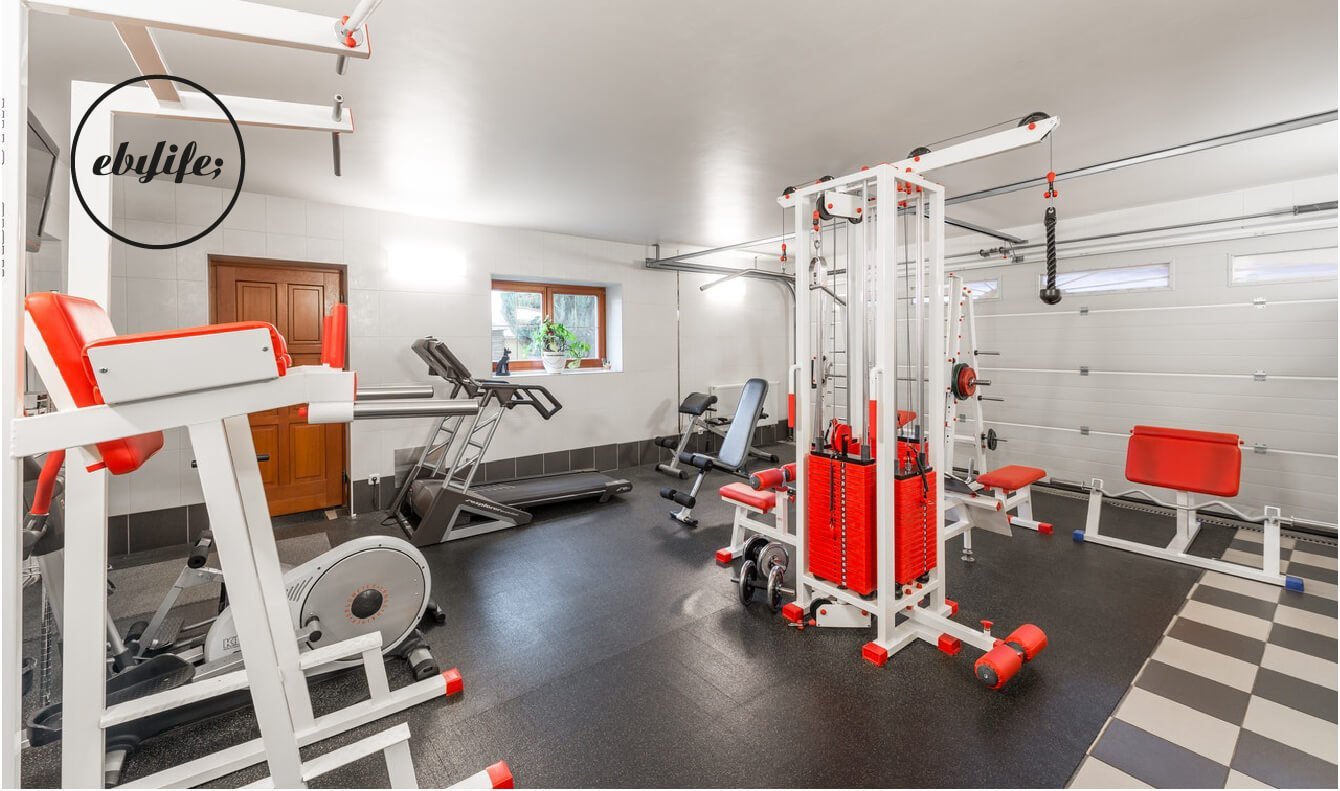How to set up a home gym
By Martin Ebner
Whether it's the time strain of traveling to the gym and back, the ego, the cost or the fact that you regularly have to battle it out to get onto your favourite piece of equipment, there's never been a better time to set up a home gym.
Before you do, there are a few things that you need to consider. Allow me to use my own first experience of setting up a home gym as an example of what and what not to do.
When I was around 18, my sister and I decided that instead of going to the gym, we were going to work out at home in the garage. We approached our parents and asked If they would pay for it. They very generously agreed to a budget of £1000. After all, it was their intention to use it too. My dad at the time was obsessed with getting “abs” and we used it to our advantage.
After doing zero research we rushed out to a gym equipment store (that's what you did back then) and on the spot decided we wanted to blow all of our budget right there and then on a £400 Cross-trainer, a £250 Smith machine, a £200 fully adjustable incline/decline/flat bench, a Barbell & Dumbbell set and some weight plates. A set up that was some good but mostly bad.
Here's what we did right
1. We bought a fully adjustable bench, barbell & dumbbell set with weight plates.
Given that my priority at the time was to get JACKED by lifting weights, this was perfect for my goals. Both were versatile, well used and have since been recycled to my brother in law who still uses them to this day (so he says).
What we did wrong
1. We bought a “cheap” cross-trainer.
Not only do Cardiovascular machines take up a huge amount of space, unless you have some cash to splash, their cheaper versions aren't ergonomically well set up and most of the ones I've tried haven't run smoothly at all.
2. When asked “Do you want us to assemble the smith machine for you for £200?”, we said, “absolutely not sir!”
What sort of clowns did he take us for? I mean, how difficult could it be to set it up?! VERY as it turned out. I ended up setting it up irreversibly incorrectly. Therefore rendering it useless for it's intended purpose. In the end, I used it for a pull exercises and now my dad uses it to hang dirty rags on. While It didn't work out too badly, a pull-up bar would have been the much more affordable and space-saving option.
Thankfully we live and we learn. Since then and almost 2 decades of experience in training myself and as a personal trainer, I know exactly what I need to set up an affordable and fully functional home gym. Here's how:
Top tips to build a perfect home gym
1. Stay clear of cardio machines
Unless you have a big budget, a big space or a very specific cardiovascular fitness goal, avoid single-purpose cardiovascular equipment like treadmills, cross trainers, steppers etc. Instead, save your $$s and get outside for a run, walk, cycle, rollerblade etc. If outdoors isn't an option, a €10 CrossFit-style skipping rope will suffice! If you simply must buy a cardio machine, make sure you give it a proper try first. You wouldn't buy a car without a test drive. Cardio machines are no different!
2. Invest in equipment specific to your fitness goal
This might sound obvious but have a good think about your fitness goal(s) over the next year or 2. Is it to improve function, speed, build muscle and strength, improve your flexibility, etc? Once you know what you'd like to achieve, you'll have a much better idea of the sort of equipment to invest in.
3. Stay away from overly expensive or faddish equipment
If you saw it on an infomercial, it's more likely going to end up in the spare room or as a clothes rack than it is to help you reach your fitness goals. If it seems to good to be true, more often than not, it's exactly that. No, you can't build abs in a week and no, it's not the only piece of equipment you'll ever need!
4. Buy simple equipment that serves a variety of purposes
You'll want to invest in equipment that is both simple and multi-functional. Here are my top 8 pieces of home gym equipment (in no particular order):
TRX Trainer
Olympic Barbell
Adjustable Dumbbells
Resistance bands
A mat
An adjustable bench
A-pull up bar
5. Start small and add one piece of equipment at a time
Start out with the basics and build up your home gym over time. Those mentioned above, in my humble opinion, should make up the foundation of any home gym. It's better to start small and build your way up once you have a clearer idea of what it is that you need.
6. Create a beautiful space
Last but not least, create a beautiful space to work out in.
If you choose a dark and dingy, mold-infested corner of your garage, it's unlikely you’ll feel inspired to work out there. Instead, invest a little of your budget in a coat of paint, a mirror (optional), a nice plant, complimentary lighting and a portable speaker!


